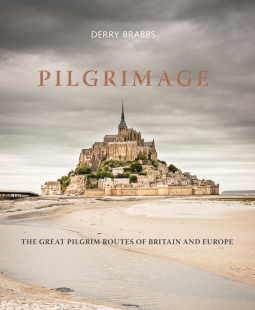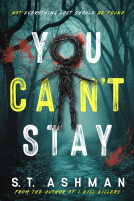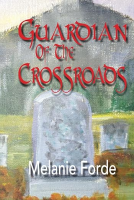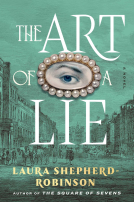
Pilgrimage
The Great Pilgrim Routes of Britain and Europe
by Derry Brabbs
This title was previously available on NetGalley and is now archived.
Send NetGalley books directly to your Kindle or Kindle app
1
To read on a Kindle or Kindle app, please add kindle@netgalley.com as an approved email address to receive files in your Amazon account. Click here for step-by-step instructions.
2
Also find your Kindle email address within your Amazon account, and enter it here.
Pub Date Oct 26 2017 | Archive Date Mar 19 2018
Quarto Publishing Group - Frances Lincoln | Frances Lincoln
Talking about this book? Use #Pilgrimage #NetGalley. More hashtag tips!
Description
Pilgrimage in Europe is thriving on a massive scale. This century the cathedral at Santiago de Compostela alone has seen 40 times the number of pilgrim visits. Author Derry Brabbs’ previous book, Roads to Santiago, focused exclusively on the 'camino' through France and Spain to Santiago de Compostela; Pilgrimage revisits this classic route, and nine other inspirational journeys across Europe.
Whether you’re truly making a pilgrimage, exploring the world, or simply hiking, Pilgrimage will lead you along deeply historical routes like the 'Jakobsweg' in Germany, between Cologne and Trier. You’ll find great walks in Britain and France, like St. Cuthbert's Way which winds around the Scottish Borders to the holy island of Lindisfarne, and the World Heritage Site of Mont-St-Michel built on the tiny island off the coast of Normandy.
The most notable addition to the rejuvenated era of pilgrimage is the Via Francigena, now a very well established path through Switzerland and Italy. The Italian section begins on the bleak summit of the Great St Bernard Pass where a hospice still caters to the needs of passing pilgrims before heading down to Rome through some of Italy’s most beguiling countryside interspersed with medieval hilltop towns and villages.
Astounding photographs combine with an absorbing text that describes the history and key features of each route, as well as brief details of the distances and the number of days it takes to walk, and a list of websites to help plan your journey.
Available Editions
| EDITION | Other Format |
| ISBN | 9780711239005 |
| PRICE | $50.00 (USD) |
| PAGES | 256 |
Featured Reviews
If you have a interest in these pilgrimages of Britain and Europe, then this is a most beautiful coffee table book.
With a bit of history of each route, it is supported with the most stunning photos. Having previously been to Italy, seeing these photos brought many memories back and it fed my little dream of walking some of these trails one day.
Thank you to Netgalley and the publisher for a digital copy to view.
Inspirational and Aspirational
This is not a guide, in the sense that it doesn't offer such things as mile by mile lists of accommodations or sights. It isn't just or only a collection or gallery of photographs. Rather, it is a temptation and an inspiration.
The author covers ten major historic pilgrimage routes. A few are revisits to the classic Santiago de Compostela routes from Brabbs' earlier book. The rest are drawn from around Europe and offer surprising variety. Amongst others, you will travel the Scottish Borders, and to Mont-St-Michel, and through Germany, and deep into Italy. The point, if a project like this needs a point, is to get your motor running, to remind you of a glorious holiday you once took, or at least to provide you with a good and satisfying armchair trip.
After a very brief introduction the book is divided into different chapters for each route. We start with a basic route map, which overlies a medieval map of the territory. That's both charming and not especially helpful, which isn't an unusual combination for a book like this. We start the narrative at the beginning of the route and end at the end. Along the way we learn some history, are favored with an historical tale or two, have some of the sites pointed out, and then arrive at our destination safe and sound.
The photos are gorgeous, and well chosen. They aren't always the standard postcard views, and include details as well as landscapes.
Our guide for all of this is articulate and good humored. The balance achieved between and among historical fact, telling detail, fanciful story, route description, architectural description, and church history is impressive and nicely paced.
There is a listing of websites for different routes, but apart from that this is not a practical guide for planning a sojourn. But it will inspire, educate and entertain, which for me was quite enough.
(Please note that I received a free advance will-self-destruct-in-x-days Adobe Digital copy of this book without a review requirement, or any influence regarding review content should I choose to post a review. Apart from that I have no connection at all to either the author or the publisher of this book.)
 Rosemary S, Librarian
Rosemary S, Librarian
Brabbs looks at 10 historic pilgrimage routes throughout Europe, with information about why these sacred routes exist and why people still seek them out today, hundreds of years later. Beautiful photos and maps will appeal to pilgrims, hikers and tourists alike
 Teresa N, Reviewer
Teresa N, Reviewer
I love to travel. I love to see new places, experience the sites and sounds of places I have never been. I have been a lot of places, and I will still go to more places. But there are some places I know I will probably never get a chance to visit. So I travel through books about real places. This is one of those books. Pilgrimage by Derry Brabbs is an amazing book to armchair travel and it is also a great guide book if you were to get a chance to actually go to the laces in the book.
There are 11 routes in the book that Europe's Pilgrims used. From 3500 people walking the route from Northern Spain to the Shrine of St James the Apostle in Santiago de Compostela in 1988 to 277,000 as of 2016.
The book features amazing photos along the routes, maps, and lots of information about all the stops along the way and of course the ending point. It tells you how many miles the route is and how many days it should take to cover the route. These routes are done by walking, they way the original Pilgrimage took place. I am sure some of the routes you could go by car but if you wanted to experience the routes they way the pilgrims did you would want to walk the route.
I received this book from the Author or Publisher via Netgalley.com to read and review.
“The rural roads, bridle tracks and footpaths of Europe are once again echoing with the sound of pilgrims’ feet following a resurgence that began during the latter of the 20th century.”
As pilgrims traverse many routes of Europe each year, on their paths they encounter rich history depicted in stunning architecture and woven with legends. This book brings such 10 routes varying from 5 to 50 days.
History.
The history depicts many interesting aspects including architecture of churches and its fame for a city, for ex. Canterbury Cathedral, on the Pilgrims Way route, makes the city of “Canterbury the cradle of English Christianity and subsequently Mother Church of the Anglican faith.”
Rouen Cathedral awes not only today’s pilgrims it also “greeted the great Impressionist painter Claude Monet every day from the makeshift studios he set up opposite the cathedral in 1892 and again the following year.” Rouen is the starting city of Les Chemins du Mont-Saint-Michel route.
From the start the history is woven with the spirit of Christianity and legends.
Such as the spirit of early Christianity exhibited by monastery established in AD 635 by St Aidan on the island of Lindisfarne. It is the final destination of the St Cuthbert’s Way route.
Such legends as of nun Winefride and well named after her St Winefride’s Well in Welsh town of Holywell – due to many documented miracle cures it was named the ‘Lourdes of Wales.’
Iconic island of Mont-Saint-Michel reveals interesting story of veneration of St Michael the Archangel and the legend regarding the foundation of Mont-Saint-Michel.
It also brings anything interesting between for ex. Napoleon and his army crossing one of the routes “the Great St Bernard en route to defeating the Austrians at the Battle of Marengo in 1800.”
What gives this read sparks is the injection of the spirit of Christianity, legends and the soul of pilgrimage.
What makes the soul of pilgrimage for me is the information pertaining exactly to pilgrims for ex. vivid depictions of the Holy Week in Seville, bringing unforgettable experience. And such small mentions as Rouen to Mont-Saint-Michel route is for those seeking tranquility of nature taking pilgrims through “typical French forests or vast tracts of open countryside.” Or Conques in France is one of very few places retaining the spirit of medieval pilgrimage.
The book ends on a very high note with my favorite route of Via Francigena with the Great Bernard Pass in Switzerland being “the most iconic landscape feature on the pilgrimage (…) it winds alongside Lake Geneva through vineyards of the Lavaux.” And this part gets the best injection of soul of pilgrimage, pertaining to first pilgrims making their way through harsh terrain of the Alps.
Good tips, for ex. to take extra time to rest at Pavia or to take a small detour to Carrara – “the source of the world’s finest marble” which Michelangelo used to chisel David and Pieta.
 Reviewer 284049
Reviewer 284049
I read the summary and description of the book and still didn't know what I'd be getting. While informative and descriptive, nothing beats a good photo and map. As someone who appreciates a well taken travel photo and has spent countless hours of my life trying to get the perfect shot, this book is chock full of them. Places I would never have thought have going laid out in perfectly composed image. The travel itch is once again ignited with the background I need to fully appreciate the locales. Well worth the purchase.
 Richard L, Reviewer
Richard L, Reviewer
This is a wonderful book that appeals to me on a number of levels.
I love the concept of pilgrimage and this is a book that brings to the reader’s attention a number of existing routes and trails that the EU in their wisdom have got behind and encouraged sign posting and way marking.
English reader’s may know of The Pilgrims Way and be familiar with Chaucer’s Canterbury tales. But the many long distance footpaths and trails across Europe was a revelation to me. I suppose I should of assumed that all paths lead to Rome but it does exist the Via Francigena. It was also revealing that a journey along these routes of pilgrimage were no walk in the park; long and arduous was one thing but to be fallen upon by thieves and robbers who would cut your throat as quickly as they cut your purse also gave these religious highways a more respectful subject than a more drover’s tract or journey to market.
I had heard about the pilgrimage to Santiago de Compostela but was surprised it had many different starting points.
The second benefit gained from reading this book is the history of the many interesting places pilgrims travelled through. Often of a deep religious meaning; with places of great architecture and spiritual significance. With tombs, relics and connects to Saints. The insight gained in the wider historical development of these places, their trade and commerce that enabled them to develop. Now while those industries may have wained the buildings remain to the glory of God built in earlier centuries out of the wealth in the region. Many places are off the beaten track or modern highways and might be overlooked or ignored by modern tourists. I was fascinated by not only the church history but by the culture and historical context places had and the details shared in telling their story.
Finally the pictures alone would be worth investing in this book as the landscape of Europe is brought to you with a clear and telling revelation of not only great cathedrals but stunning countryside and majestic skylines.
I have always loved walking and regardless of the devotional aspect pilgrimage brings to those who take these journeys, I have found new paths to follow and journeys to make. They are getting increasingly popular and despite the many additional beds on offer to the pilgrims, accommodation is not a given.
A quote from the start of one chapter gives a taste of why these pages and journeys might capture your imagination or have you reaching for your boots and backpack.
“The Ways of St James in Germany (die Jakobswege) are an integral part of an international network but most of them also make rewarding pilgrimages in their own right. One of the best examples is the 180-mile (290km) route from Munich to Lindau on Lake Constance, an absorbing journey providing a combination of stunning church architecture, ever changing landscapes and access to enough Bavarian beer to quench the thirst of even the most dehydrated pilgrim!”
Great index and wider tips on following up on the routes described makes this a great book and a coffee table asset that will transport the most inactive soul to new heights of blessing and new hopes of making their own plans to travel.
Someone said life was a journey not a destination. This book cries out for you to make journeys to places of significance, spiritual awakening and a trail of endurance with a trial of faith. Even the most secular can not be moved by the feet of those that once and still today plod in pilgrimage. For them it may just be a series of long distance walking paths but this book is more than cerebral read it is a testimony of a faith and the steps that some take to go on pilgrimage. A phenomena shared by many of the world’s religions but in this account the paths of Christian Pilgrimage.
 Amy P, Bookseller
Amy P, Bookseller
I picked up this book because I love this concept of pilgrimage to a place of significant meaning to a person. Of course, the places found within this book are aged and have historical & religious significance for many. However, many of us today may find a place that they make their own pilgrimage to.
Mostly filled with photographs, which I was very happy about. To be able to physically travel to these places would be the preference, but many of us won’t, so in order to give the reader a real taste of the place there needs to be pictures and lots of them. I knew about several of these places Le Mont St Michel, St Cuthbert’s Way, Lindisfarne Island, Canterbury Cathedral & the significance it is to the Anglican faith. I wasn’t aware of the Via Francigena, though I’m very familiar with some of the spots along the route through Italy & Switzerland. Stunning.
I was 10 the first time I visited Le Mont St Michel, and I’d never seen anything quite like it before. Living in England I was surrounded by history and beautiful old treasures. But this was something else. It’s just a magnificent site to see. Great choice for the cover.
If you love history, Europe & fancy yourself a traveller, you’ll likely enjoy browsing through the pages of this book. It makes a great coffee table addition.
Thank you to Netgalley for the eARC. This is my honest review.
 Diana K, Reviewer
Diana K, Reviewer
Many people know of the Camino de Santiago but I doubt many know that there are multiple other pilgrim routes in Europe. The photographs are stunning in this book which gives the reader a brief history and flavor for some of these historic pilgrimage routes. I had a special interest in this book since one of the routes it covers is the Via Francigena and I walked 100 miles of it a few years ago. Reading this book may well make you interested in walking along one of these routes, either for religious purposes as many people do or for the scenery and history as I did. Thanks to NetGalley for a digital ARC of this beautiful book.
 Librarian 299542
Librarian 299542
Europe's best known pilgrimage is the Camino the Santiago, but this book offers readers information on lesser known, but equally meaningful--not to mention stunning--pilgrimages for those who want to wander and perhaps find themselves in the process.
This is a wonderfully illustrated arm chair travel book for ten Pilgrimages through Europe. This is not a practical guide but it is a great starting point to begin your own pilgrimage or just to armchair travel. The author provides a map, general information and points of interest accompanied by beautiful photographs. The writing is good, easy to read with a touch of humor. If you are planning an actual trip this book makes a good starting point if not enjoy this armchair travel.
Readers who liked this book also liked:
Sara T. Behrman
Children's Fiction, Outdoors & Nature, Parenting & Families
Tomoka Shibasaki
General Fiction (Adult), Literary Fiction, Novellas & Short Stories
Laura Shepherd-Robinson
General Fiction (Adult), Historical Fiction, Mystery & Thrillers


















